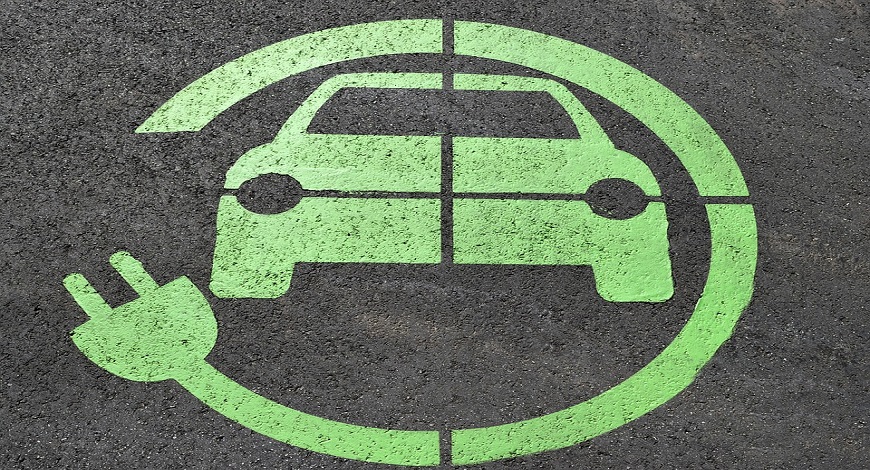
Electric vehicles (EVs) are vehicles that use electric motors instead of internal combustion engines for vehicle propulsion. EVs are powered by rechargeable batteries, which store electrical energy and provide it to the motor. These batteries are paired up with a battery management system for electric vehicle.
Typically, the battery used in EVs is some variant of the lithium ion battery technology, which offers high energy density, long cycle life, and fast charging. However, lithium-ion batteries also face some challenges in effective operation in an EV, given the dynamic environment and intense energy demands of EVs.
Electric Vehicle batteries consequently use a sophisticated electronic circuitry called a battery management system (BMS), which typically monitors and controls the performance and safety of the battery pack. This edition of Battery Decoded explores the various aspects of BMS, its components, functions, safety features, update capabilities, hardware specifications, role in fleet management, manufacturers, and its contribution to battery data analysis and research.
A Battery Management System for electric vehicle typically comprises three main components: a control unit, sensors, and actuators. The control unit is the brain of the BMS, which communicates with the vehicle’s main computer and other components, such as the charger, the motor, and the thermal management system. The control unit also executes the BMS algorithms, which determine the optimal operating conditions and actions for the battery. The sensors are the eyes and ears of the Battery Management System for electric vehicle, which measure various parameters, such as voltage, current, and temperature, of each cell or module in the battery pack.
The sensors also detect faults or abnormalities in the battery, such as short circuits, overvoltage, or overtemperature. The actuators are the hands and feet of the Battery Management System for electric vehicle, which perform actions to regulate the battery’s performance, such as balancing the cells, disconnecting the battery, or cooling the battery.
The Battery Management System for electric vehicle can have different structures, depending on how the sensors and actuators are distributed and connected. The most common types of BMS structures are centralized, distributed, and modular.
In a Modular BMS, the sensors and actuators are grouped into modules, and each module has its own control unit, which communicates with a master control unit. This structure is a compromise between the centralized and distributed structures, offering a balance of cost, complexity, and performance.
Most lithium-ion batteries used in EVs are equipped with a BMS, due to the inherent risks associated with overcharging, over-discharging, overheating, or damage. The Battery Management System for electric vehicle protects the battery from various hazards by limiting the charging and discharging currents, maintaining the optimal temperature range, and balancing the cells to prevent uneven degradation. The Battery Management System for electric vehicle also optimizes energy utilization and prolongs the battery life by preventing excessive cycling and deep discharging.
For example, according to a study by the National Renewable Energy Laboratory (NREL), a Battery Management System for electric vehicle can improve the energy efficiency of an EV, by reducing the energy losses and increasing the usable energy of the battery. Another study by the Argonne National Laboratory (ANL) estimated that a BMS can extend the battery life by preventing capacity fade and power fade of the battery.
Furthermore, a report by the National Highway Traffic Safety Administration (NHTSA) revealed that a Battery Management System for electric vehicle can prevent or mitigate 99.8% of the potential incidents of battery fires or explosions, by detecting and isolating the faulty cells or modules.
Many companies across a small variety of industries make BMS for electric vehicles. Some of them also make battery cells or modules, while others specialize in BMS hardware or software. These companies often provide comprehensive solutions, including battery design, integration, testing, and management.
LOHUM as a battery recycling and battery reuse company also pairs battery solutions with our Battery Management Systems developed in-house, for both stationary Energy Storage Systems and Electric Vehicle batteries, specializing in maximizing battery residual value.
Top 5 Energy Storage Solutions Applications Made Via EV Battery Reuse
The Battery Management System for electric vehicle facilitates the energy flow between the battery and the vehicle’s systems. It ensures that the battery delivers sufficient power and torque to the motor and that the battery receives the correct amount of charge from the charger or regenerative braking. The BMS also monitors the state of charge (SOC), state of health (SOH), and state of power (SOP) of the battery, which indicate the amount of energy, capacity, and power available in the battery, respectively. The Battery Management System for electric vehicle uses these parameters to estimate the range, performance, and lifetime of the EV.
The functionality of BMS with electric vehicles can be demonstrated by some examples. For instance, when the EV is accelerating or climbing a hill, the BMS increases the power output of the battery to meet the demand of the motor. When the EV is braking or descending a hill, the BMS reduces the power output of the battery and enables regenerative braking, which converts the kinetic energy of the vehicle into electrical energy and stores it in the battery.
When the EV is plugged into a charger, the Battery Management System for electric vehicle regulates the charging current and voltage to ensure the optimal and safe charging of the battery. When the EV is parked or idle, the BMS minimizes the self-discharge and parasitic loads of the battery and maintains the battery temperature within the desired range.
The BMS plays a vital role in Lithium ion battery safety by preventing thermal runaway, which is a chain reaction of increasing temperature and pressure that can cause the battery to explode or catch fire. Thermal runaway can be triggered by various factors, such as short circuits, overvoltage, overtemperature, mechanical damage, or external heat sources.
The BMS detects any abnormal conditions, such as high or low voltage, high or low temperature, high or low current, or low impedance, and takes corrective actions, such as cutting off the power, activating the cooling system, or alerting the driver. The BMS implements various safety mechanisms, such as fuses, circuit breakers, contactors, relays, and isolation switches, to isolate the faulty cells or modules, and prevent the propagation of thermal runaway to the rest of the battery pack.
For example, when a cell or module experiences a short circuit, the BMS detects the sudden drop in voltage and increase in current and opens the circuit breaker or contactor to disconnect the cell or module from the battery pack. When a cell or module is overcharged or over-discharged, the BMS detects the deviation from the normal voltage range and balances the cell or module by bypassing or diverting the current.
When a cell or module is overheated or overcooled, the BMS detects the deviation from the normal temperature range and activates the cooling or heating system to adjust the temperature. When a cell or module is damaged or punctured, the BMS detects the change in impedance or resistance and isolates the cell or module from the battery pack.
The software of a Battery Management System for electric vehicle can be updated to improve the performance, efficiency, and reliability of the battery. The software update can include new or modified BMS algorithms, parameters, or settings, which can enhance the accuracy, robustness, or adaptability of the BMS. Some BMSs can be updated remotely via wireless communication, such as Bluetooth, Wi-Fi, or cellular, while others require a physical connection to the vehicle or the charger.
The hardware of a Battery Management System for electric vehicle can also be upgraded or replaced, but this may involve more cost and complexity. The hardware upgrade or replacement can include new or improved sensors, actuators, or control units, which can increase the effectiveness, precision, or speed of the BMS. However, the hardware upgrade or replacement would typically also require compatibility checks, calibration procedures, and safety tests to ensure the proper functioning and integration of the new BMS components.
The Battery Management System has a growing role in electric vehicle fleet management, as it can provide useful data and actionable insights for electric vehicle fleet operators. A Battery Management System for electric vehicle can monitor health, status, and location of batteries, and send alerts or notifications for maintenance, charging, or replacement.
The Battery Management System for electric vehicle serves as a valuable tool for data collection and research. It offers insights into the battery’s performance, behavior, and degradation. Researchers and engineers leverage this data to understand the factors that affect the battery’s life and efficiency, and to develop new technologies and solutions for improving the battery’s design, operation, and management.
The data collection and research contribution of BMS can be exemplified by some projects and publications. For example, the Battery Lifetime Analysis and Simulation Tool (BLAST) is a software tool developed by NREL, which uses BMS data to simulate and analyze the battery’s performance and degradation under different scenarios and conditions.
Another example is the Battery Health Management (BHM) project, which is a collaborative effort by NASA, ANL, and other partners, which uses BMS data to develop and test novel algorithms and methods for estimating and predicting the battery’s health and remaining useful life. Furthermore, many academic papers and journals have used BMS data to conduct experiments and studies on various aspects of battery science and engineering, such as modeling, optimization, diagnosis, prognosis, and control.
LOHUM’s research into millions of kilometers of EV battery performance data from EV Battery Management Systems has led to the creation of LOHUM DETX™, a battery future purchase price index that enables weighted buyback agreements.
Battery management systems are foundational to ensuring the safe, efficient, and prolonged operation of lithium-ion batteries in electric vehicles. It protects the battery from overcharging, over-discharging, overheating, or damage, and prevents thermal runaway in real-time. It facilitates and controls the energy flow between the battery and the vehicle’s systems, and optimizes energy utilization to maximize battery life and performance.
The Battery Management System for electric vehicle can be updated via software or hardware to improve its functionality and reliability. It also provides useful data and insights for electric vehicle fleet management and battery research and development. The battery management system is thus a key component in advancing the sustainable electrification of transportation and power infrastructure.
Related blogs
This entrepreneur wants India to make its own lithium-ion cells for electric vehicle batteries

Forbes India
Rajat Verma already recovers raw materials from used cells at his venture, LOHUM Cleantech. He wants to close the loop by making cells in India as well.
India needs integrated recycling and repurposing battery business model: Rajat Verma of LOHUM Cleantech

YOURSTORY
In an interaction with AutoStory, Rajat Verma, Founder and CEO of LOHUM Cleantech, speaks about building his company, and about battery manufacturing and repurposing as an industry.
Sourcing Raw Materials Is A Big Challenge In Li-ion Battery Space: Founder Lohum

Business World Disrupt
Recognized as ‘The Most Innovative Company of the year 2022’ by The Confederation of Indian Industry (CII), LOHUM is a producer of sustainable Li-ion battery raw materials
1800 572 8822
Email : enquiry@lohum.com
G98, Site, 5, Kasna, Block A, Surajpur Site V, Greater Noida, Uttar Pradesh 201306
LOHUM Cleantech Private Limited, Plot No. D-7 & 8, Site 5th, Kasna Industrial Area, Greater Noida, Gautam Budh Nagar, Uttar Pradesh – 201308
LOHUM Cleantech Private Limited, Plot No. O-17, Site 5th, Kasna Industrial Area, Greater Noida, Gautam Budh Nagar, Uttar Pradesh – 201308